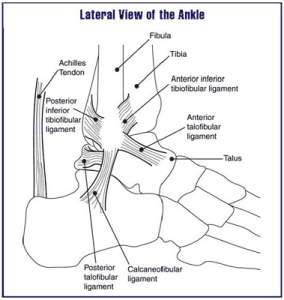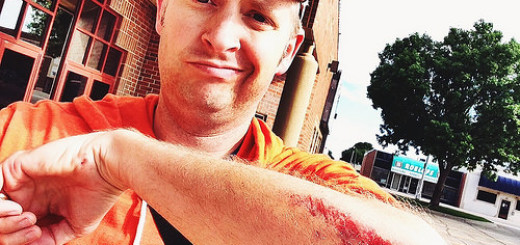Ankle Sprains and Aging Pains
My father recently bought a shiny new jump rope and took it for a test run in the backyard. However, keep in mind he has never jumped rope before in his life. And is 67. And was wearing sandals. And was on uneven concrete. And did I mention he was going on an overseas vacation in a week? So, of course, his first attempted double-under criss-cross turned into a trip, fall, sprained ankle move. He had immediate pain, swelling, and trouble weight-bearing. He sought advice from the boss (my mother), who said that 1) he was an idiot and that 2) why don’t you ask your son?
So that’s where I reluctantly got dragged in. And I’ll talk about what happened at the end of the post. But first, lets discuss the injury:
Anatomically, the ankle joint consists of three bones, the tibia, fibula, and talus, with multiple connecting ligaments on all sides that provide additional stability. Ankle sprains result from injury to the ligaments, and not to the bones themselves. On the inside (medial side) of the joint is the deltoid ligament, which is a complex composed of several smaller ligaments. On the outside (lateral side) of the joint are three distinct ligaments, of which is included the anterior talofibular ligament. When you evert your foot (the sole points outward), you are stressing your medial ligaments. When you invert your foot (the sole points inward), you are stressing your lateral ligaments.
Most folks injure their ankles through inversion, which is confusing in theory but actually makes common sense. For instance, athletes who plant their foot may have their body continue traveling over the ankle due to momentum; e.g. your body rolls over your ankle joint, hence the term “rolled” ankle. If this momentum is to the side, there is an inversion stress that stretches the lateral ligaments. That why the vast majority of ankle sprains result in pain on the outside of the ankle. The aforementioned anterior talofibular ligament is the wimpiest of the lateral ligaments and tends to be the first to be injured.
Pain and swelling are the most common symptoms of an ankle sprain. Ability to weight-bear varies; there is nothing preventing you from putting weight on a sprained ankle since the bones are not affected; however the aforementioned symptoms may prohibit substantial walking. In contrast, a broken ankle will present much differently. In addition to the the usual pain and swelling, there may be significant bruising and skin discoloration, pain throughout the entire joint, exquisite pain with weight-bearing, and you may actually feel the fractured bones shifting and grinding if you apply any pressure to the ankle. As the treatment and outcomes of ankle sprains and ankle fractures are significantly different, it is key to being able to identify what type of injury is present.
Assuming that you have an acute ankle sprain, the treatment options are simple. The term/mnenomic RICE (Rest, Ice, Compression, Elevation) is often used as a protocol. In addition, a limited course of anti-inflammatories will help. The most important thing to remember is that, because bone is not injured, weight-bearing and walking is allowed once the pain and swelling subsides. In addition, practicing range of motion exercises also can aid with keeping your ankle mobile – this can be as simple as drawing out the alphabet with your big toe several times a day. Given an adequate time of rest, the ankle joint should heal almost as good as new. However, if you have tried RICE and anti-inflammatories for several days and you still have significant pain with walking, report to your PCP (primary care physician) to get some xrays because something might be broken.
So, back to my father. He was worried that he would have to cancel his trip because the pain was so severe the first night after the injury. But since he had only pain in front of the lateral ankle with only moderate swelling, I figured he had simply sprained his ankle. And, just as predicted, his pain steadily got better day by day. He took motrin for 48 hours to decrease the swelling, applied ice packs periodically, and used an ACE dressing for compression. By day 3 he was able to hobble around quite nicely, and by day 7 he was essentially back to normal and able to handle the long walk in the airport to catch his flight.
Of course, as soon as he got to his destination, his toe started flaring up due to gout and he had to cut the vacation short. But we’ll save that story for another time.





Your Thoughts